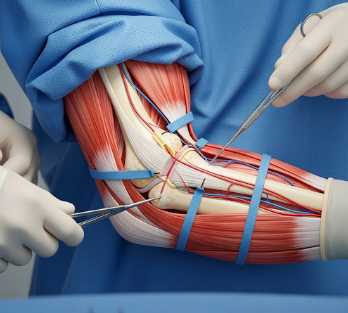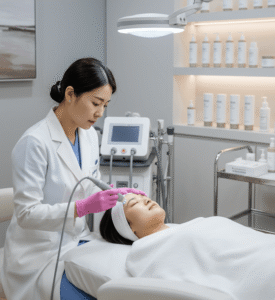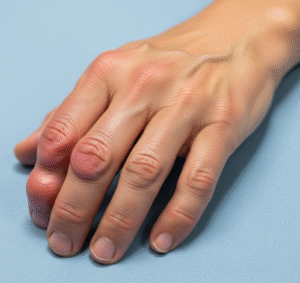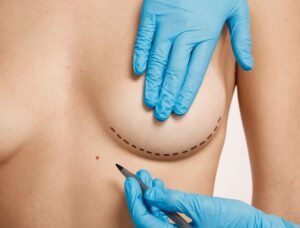Overview
Elbow surgery refers to a range of surgical procedures performed to treat injuries, degenerative conditions, or deformities of the elbow joint. The goal is to relieve pain, restore mobility, and improve joint function, whether caused by trauma, arthritis, ligament tears, or congenital issues.
In South Korea, elbow surgeries are performed in specialized orthopedic centers and hospitals using state-of-the-art surgical techniques, advanced imaging, and minimally invasive approaches, ensuring optimal patient outcomes and faster recovery.
What is Elbow Surgery?
Elbow surgery can encompass several procedures depending on the condition:
- Arthroscopic elbow surgery: Minimally invasive technique to treat cartilage damage, remove loose bodies, or repair ligaments
- Open reduction and internal fixation (ORIF): For fractures of the elbow bones
- Ligament reconstruction: For instability or torn ligaments, such as the ulnar collateral ligament
- Debridement: Removal of damaged tissue or bone spurs
- Elbow replacement (arthroplasty): Replacement of severely damaged elbow joint
Purpose:
- Restore elbow joint mobility and strength
- Relieve chronic pain from injury, arthritis, or overuse
- Correct deformities or structural damage
- Enable patients to perform daily and occupational activities
What are the Benefits?
Elbow surgery offers several functional and quality-of-life benefits:
✔ Relieves pain from arthritis, fractures, or injuries.
✔ Restores joint mobility and strength.
✔ Corrects instability and deformities.
✔ Prevents further joint degeneration or damage.
✔ Enables return to normal daily activities and occupational tasks.
Procedure Details
1) How should I prepare for Elbow Surgery?
- Preoperative assessment: X-rays, MRI, CT scans, and blood tests to evaluate the elbow and overall health
- Medical review: Discuss medications, allergies, prior surgeries, and comorbidities
- Physical preparation: Exercises to maintain shoulder and wrist strength may be recommended
- Consent and counseling: Understand the procedure, anesthesia, risks, and rehabilitation
Korean orthopedic centers provide detailed pre-op planning, patient counseling, and personalized surgical strategies.
2) What happens during Elbow Surgery?
- Anesthesia: General or regional anesthesia administered
- Incision and exposure: Depending on the procedure, the surgeon may use open or arthroscopic techniques
- Surgical intervention:
- Remove damaged tissue or bone
- Repair or reconstruct ligaments
- Fix fractures with plates, screws, or pins
- Replace joint components in severe cases
- Closure: Sutures or staples applied; sterile dressing applied
- Duration: Typically 1–3 hours, depending on complexity
Advanced Korean centers use minimally invasive arthroscopy, high-precision instruments, and computer-assisted guidance to enhance surgical outcomes and reduce recovery time.
3) What happens after Elbow Surgery?
- Immediate: Pain managed with medication; elbow immobilized with a splint or brace
- Hospital stay: Usually 1–5 days depending on the procedure
- Rehabilitation: Physical therapy begins early to restore motion, strength, and function
- Follow-up: Regular monitoring for wound healing, joint stability, and functional recovery
- Recovery: Full functional recovery may take 6–12 weeks, depending on the procedure type
Risks / Benefits
Potential Risks:
- ➤ Infection at the surgical site
- ➤ Nerve or blood vessel injury
- ➤ Blood clots or bleeding
- ➤ Stiffness or limited range of motion
- ➤ Implant loosening (for replacement surgeries)
Major Benefits:
- ✔ Significant pain relief
- ✔ Restored joint mobility and function
- ✔ Corrected structural deformities and instability
- ✔ Long-term improvement in quality of life
- ✔ Minimally invasive options available in modern centers
Recovery and Outlook
- Immediate: Pain and swelling management; immobilization if required
- 1–2 weeks: Begin gentle range-of-motion exercises
- 4–6 weeks: Progressive strengthening and functional activities
- 3–6 months: Most patients regain near-normal elbow function
South Korean orthopedic hospitals provide structured rehabilitation programs, guided physiotherapy, and patient education for optimal recovery.
When To Call the Doctor
Contact your surgeon if you notice:
- ➤ Persistent or worsening pain or swelling
- ➤ Redness, warmth, or discharge indicating infection
- ➤ Numbness, tingling, or loss of hand function
- ➤ Instability or mechanical problems with the joint
- ➤ Difficulty performing routine activities or unusual stiffness
Best Korea Option / Process
South Korea offers world-class elbow surgery services due to:
- Experienced orthopedic surgeons specializing in elbow and upper extremity procedures
- State-of-the-art operating rooms and minimally invasive techniques
- Comprehensive pre- and post-operative rehabilitation programs
- Structured follow-up care and patient education
- High success rates and low complication rates
- International patient support including consultation, scheduling, and follow-up
Top hospitals for Elbow Surgery in Korea:
- Samsung Medical Center, Seoul – Orthopedic Surgery & Upper Extremity Center
- Asan Medical Center, Seoul – Advanced Orthopedic Care
- Severance Hospital (Yonsei University Health System) – Orthopedic & Reconstructive Surgery
- Seoul National University Hospital – Orthopedic and Trauma Surgery













